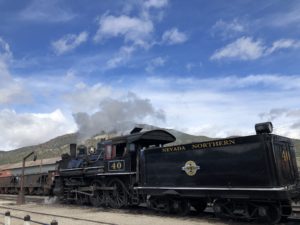The Gold Butte National Monument was established in 2016 by setting aside 300,000 acres to preserve it from development while also protecting the rich history of Native Americans, ranching and the pioneer spirit. The area is designated for recreational activities but also serves to protect the unique mixture of fossil dinosaur tracks, geology and wild west history.
Under the management of the US National Park Service, Gold Butte National Monument is a portion of the over all Gold Butte Region, a 500,000 acre expanse of rugged terrain with high peaks, low valleys and loads of solitude. The area is located about 2 hours east of Las Vegas between the “Overton Arm” of Lake Mead and the Arizona border.
Popular activities in Gold Butte include hiking, horseback riding, driving on designated roads and trails, camping, sightseeing, and fishing along Lake Mead and in the Colorado River. Please note that while camping, horseback riding, 4-wheeling and other activities are permitted In General, not all activities are permitted everywhere. Many areas are restricted to no motorized or wheeled vehicle access. Visitors are expected to know and follow the rules/restrictions.
There are many resources with extensive details of the Gold Butte NP and before visiting you should research the exact activity you desire to undertake. The Friends of Gold Butte should be consulted for up to date information on road conditions, trail conditions and travel/activity restrictions.
Included within the Gold Butte region are also two (2) designated wilderness areas, and you should respect and honor these areas appropriately. These are the Lime Canyon W.A. and the Jumbo Springs W.A.
Emergency and support services are not available and visitors should prepare appropriately for being on their own and far from back up.
This is only a general overview, please research your destinations before venturing out.
Standard Warnings!
Desert hiking carries unique risks and you should always be prepared. Select routes you are capable of handling, tell someone where you are going and when you will be back, leave no trace and take no souvenirs, (take your trash out), respect wild life, the wilderness and other people. Carry appropriate supplies including plenty of water, a map, a compass, emergency lighting (even for day trips), snacks/protein bars, an emergency whistle, signaling mirror, BIC lighter and candles, Swiss Army Knife, basic First Aid kit and protective clothing (raingear, hat, mittens, sweater). And from my time in the Army – extra socks!!! Socks are light weight and being able to change them can keep your feet dry and protected.
Pictures below are provided by contributors or supporters of this website. If you are interested in sharing your pictures of Nevada, please drop us a note.

Courtesy S. Ward – Northern Nevada Railroad, The Ghost Train